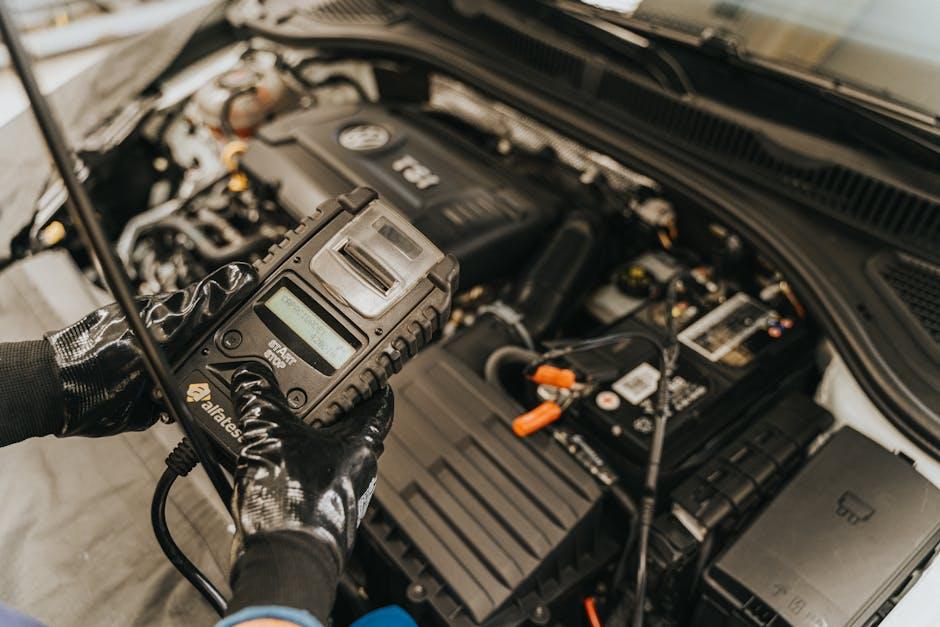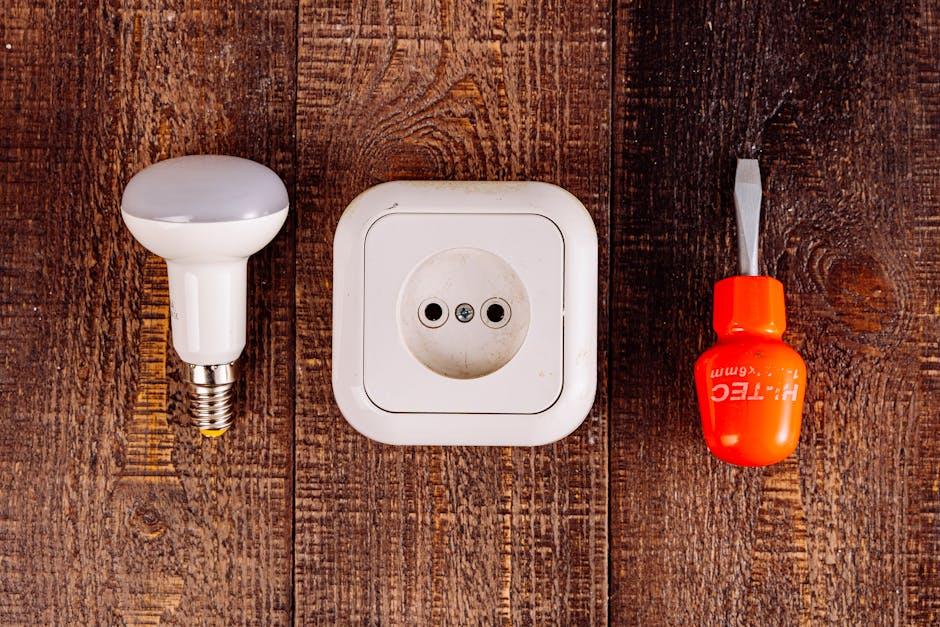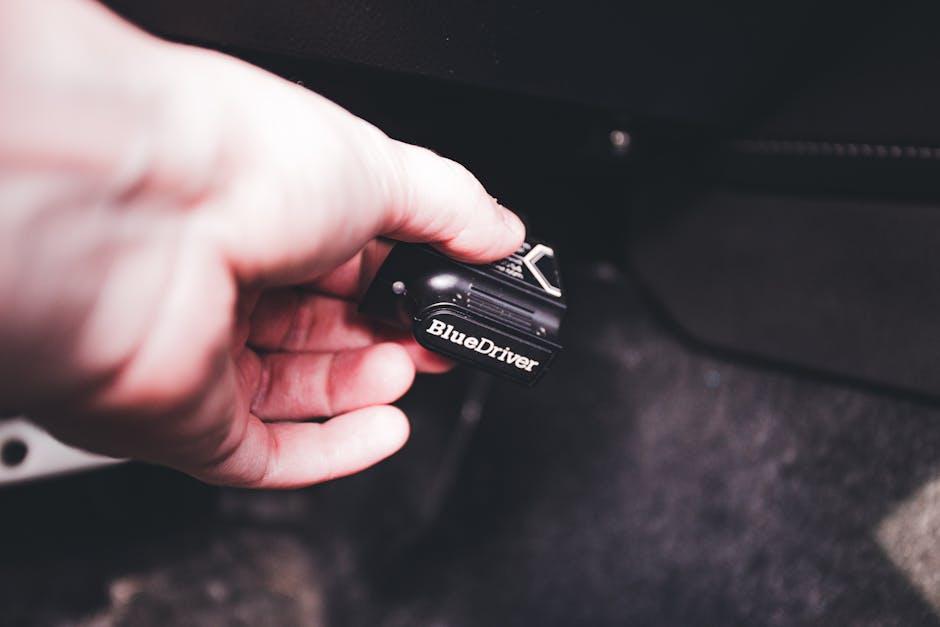Beneath the roaring heart of every car lies a small but mighty component: the spark plug. Often overlooked, these tiny devices play a pivotal role in igniting the engine’s power and keeping your vehicle running smoothly. Over time, spark plugs wear out, leading to decreased performance, rough idling, or even stubborn starting issues. Fortunately, replacing them is a straightforward task that any car owner can learn with a bit of patience and the right guidance. In this article, we’ll walk you through the step-by-step process of how to replace spark plugs, empowering you to give your engine the spark it needs to keep going strong.
Table of Contents
- Choosing the Right Spark Plugs for Your Engine
- Preparing Your Vehicle and Tools for Spark Plug Replacement
- Step-by-Step Guide to Safely Removing Old Spark Plugs
- Techniques for Inspecting and Cleaning Spark Plug Components
- Proper Installation Tips to Ensure Optimal Spark Plug Performance
- Troubleshooting Common Spark Plug Issues After Replacement
- Q&A
- Future Outlook

Choosing the Right Spark Plugs for Your Engine
Selecting the ideal spark plug goes beyond simply fitting your engine’s specifications. It requires considering your vehicle’s operating conditions and your driving style. For instance, iridium and platinum plugs offer enhanced longevity and better performance under high RPMs, making them excellent choices for performance vehicles or those frequently driven on highways. On the other hand, copper plugs may suit older or low-performance engines due to their superior conductivity, despite shorter lifespan.
When narrowing down your options, keep these key factors in mind:
- Heat range: Ensures your spark plugs operate within the optimal temperature to avoid fouling or overheating.
- Gap size: Must match manufacturer recommendations to maintain efficient combustion.
- Thread length: Critical for proper installation and engine compatibility.
| Type | Benefits | Ideal Use |
|---|---|---|
| Copper | Excellent conductivity | Older engines, budget-friendly replacements |
| Platinum | Longer life, better performance | Regular daily driving |
| Iridium | Superior durability | High-performance or heavy-use vehicles |

Preparing Your Vehicle and Tools for Spark Plug Replacement
Before diving into the spark plug replacement process, it’s crucial to ensure your vehicle is safely positioned and your tools are within easy reach. Begin by parking your car on a flat surface and engaging the parking brake to prevent any movement. Let the engine cool completely to avoid burns, as spark plugs and their surrounding components can retain heat for a long time after engine use. For added safety, disconnect the battery to eliminate any risk of electrical shorts while working under the hood.
Gathering the right tools beforehand not only streamlines the job but also reduces frustration during the process. Equip yourself with a spark plug socket designed to fit your vehicle’s plugs, a ratchet wrench, an extension bar, and a torque wrench for precision tightening. A gap gauge is indispensable for verifying the spark plug’s gap is correct according to your vehicle’s specifications. Don’t forget a set of dielectric grease and a pair of gloves to protect your hands from grime and heat.
| Essential Tools | Purpose |
|---|---|
| Spark Plug Socket | Remove/install spark plugs |
| Ratchet Wrench | Apply torque comfortably |
| Gap Gauge | Check spark plug gap |
| Torque Wrench | Ensure accurate tightening |
| Dielectric Grease | Prevent corrosion and improve connection |

Step-by-Step Guide to Safely Removing Old Spark Plugs
Before diving into the removal process, ensure your engine is cool and powered off. Hot components can cause burns or damage to the spark plug threads. Start by unplugging the spark plug wires or ignition coil connectors carefully, using a gentle twisting motion to avoid fraying or breaking the wires. Gather the right toolset — a deep well spark plug socket, a ratchet wrench, and an extension bar usually do the trick. With these in hand, carefully insert the socket over the spark plug and turn it counterclockwise. If you encounter resistance, don’t force it; applying a penetrating lubricant can help loosen stubborn plugs gently.
Once the spark plugs are loosened, remove them slowly to avoid dropping debris into the cylinder. Place each removed plug on a clean cloth to inspect for wear, deposits, or damage. Keep your workspace tidy and organized with a checklist:
- Confirm the engine is completely cool
- Disconnect wires/coils gently
- Use the right size spark plug socket
- Apply penetrating oil when necessary
- Remove plugs slowly & inspect condition
| Common Spark Plug Issues | Indicators |
|---|---|
| Carbon Fouling | Black, soot-covered plug |
| Overheating | White, blistered porcelain |
| Oil Fouling | Oily, wet deposits |
| Electrode Wear | Rounded tip, gap widening |

Techniques for Inspecting and Cleaning Spark Plug Components
Proper inspection and cleaning of spark plug components ensure optimal engine performance and longevity. Begin by visually examining the spark plug for any signs of wear such as cracks, carbon deposits, or corrosion around the electrodes. Use a magnifying glass if necessary to identify subtle cracks or burnt tips. Pay special attention to the ceramic insulator, which should remain clean and intact, as its condition directly impacts spark efficiency. If the spark plug appears damaged beyond minor fouling, replacement is advised to prevent engine misfires.
When cleaning is appropriate, start by carefully removing loose debris using a soft wire brush or a dedicated spark plug cleaning tool. Avoid abrasive materials that may damage the electrodes. You can also dip the plug in a carburetor or brake cleaner to dissolve oily deposits, then dry thoroughly. To preserve the plug’s performance, inspect and clean the threads, making sure they screw in smoothly without resistance. Below is a quick reference table for common spark plug conditions and recommended actions:
| Condition | Action | Cause |
|---|---|---|
| Light Carbon Buildup | Clean with wire brush | Rich air-fuel mixture |
| Oil-Fouled Plug | Clean and inspect cylinder seals | Worn piston rings |
| Damaged Electrode | Replace plug | Overheating or detonation |
| Corroded Threads | Clean threads or replace plug | Moisture exposure |

Proper Installation Tips to Ensure Optimal Spark Plug Performance
Ensuring your spark plugs are installed correctly is crucial for unlocking peak engine performance. Begin by carefully inspecting the spark plug gap with a feeler gauge—adjusting it to the manufacturer’s specifications guarantees a powerful and consistent spark. When inserting the spark plug, avoid cross-threading by hand-threading it gently until you feel resistance before tightening with a wrench. This delicate process protects the cylinder head and preserves the threads for years of reliable service. Using a torque wrench to tighten the plug within recommended torque values prevents over-tightening, which can cause damage, or under-tightening, which risks poor engine compression and performance.
Beyond mechanical accuracy, applying a small dab of anti-seize lubricant to the spark plug threads can guard against corrosion in harsh conditions, but be cautious not to exceed recommended amounts, as overuse may affect torque readings. Additionally, always double-check that the spark plugs are clean and dry before installation to prevent fouling and misfires. For an extra layer of security, inspect the ignition coil boots and wiring connections to ensure they are snug and free from cracks or wear. These simple yet effective steps lay the foundation for a smooth-running, fuel-efficient engine that starts briskly no matter the weather.

Troubleshooting Common Spark Plug Issues After Replacement
After installing new spark plugs, encountering performance hiccups can be frustrating. One common pitfall is incorrect gap size, which causes inefficient combustion and engine misfires. Always double-check the gap with a feeler gauge to ensure it matches the manufacturer’s specifications. Another frequent issue is overtightening or undertightening the plugs, which may lead to threaded damage or poor electrical connection. Use a torque wrench to apply the recommended torque and avoid unnecessary repairs down the line.
Sometimes, fresh spark plugs may cause rough idling or difficulty starting, often due to contamination from oil or carbon deposits within the engine. Cleaning the plug wells before installation and inspecting for leaks can prevent this. If problems persist, inspect the ignition coils and wiring harness for potential faults that could mimic spark plug failure. Consider the following checklist to troubleshoot effectively:
- Check spark plug gap with precision tools
- Apply proper torque during installation
- Inspect ignitions coils and wiring for damage
- Clean spark plug wells to avoid contamination
| Issue | Possible Cause | Suggested Fix |
|---|---|---|
| Engine Misfire | Incorrect spark plug gap | Adjust gap to spec |
| Hard Starting | Oil contamination | Clean plug wells and inspect seals |
| Thread Damage | Overtightening | Use torque wrench with correct settings |
| Rough Idle | Faulty ignition coil | Test and replace if necessary |
Q&A
Q: What are spark plugs, and why are they important?
A: Spark plugs are small but mighty components in your vehicle’s engine. They create the spark that ignites the air-fuel mixture, powering your engine’s combustion process. Without properly functioning spark plugs, your engine can misfire, run inefficiently, or even fail to start.
Q: How do I know it’s time to replace my spark plugs?
A: Signs include rough idling, decreased fuel efficiency, difficulty starting, or engine misfires. If your spark plugs haven’t been changed in over 30,000 miles (check your owner’s manual), it’s wise to consider replacement proactively.
Q: What tools will I need to replace spark plugs?
A: You’ll need a spark plug socket (usually 5/8″ or 13/16″), a ratchet wrench, a spark plug gap gauge, a torque wrench, some anti-seize compound, and possibly a dielectric grease to protect the spark plug boots.
Q: How do I prepare my vehicle before replacing the spark plugs?
A: First, ensure the engine is cool to avoid burns. Disconnect the negative battery cable for safety. Consult your vehicle manual to locate the spark plugs and remove any components obstructing access.
Q: What is the correct procedure to remove old spark plugs?
A: Remove the spark plug wire or coil-on-plug assembly carefully to avoid damage. Use the spark plug socket attached to a ratchet to turn the plug counterclockwise gently until it comes free. If it’s stuck, don’t force it; try penetrating oil and wiggle gently.
Q: How do I prepare new spark plugs before installation?
A: Check the gap using a spark plug gap gauge and adjust it to manufacturer specs if needed. Apply a small amount of anti-seize on the threads to prevent seizing in the cylinder head. You can also apply a bit of dielectric grease inside the spark plug boot to ensure a good connection.
Q: What’s the trick to installing new spark plugs correctly?
A: Thread them by hand initially to avoid cross-threading. Then, use a torque wrench to tighten them to the manufacturer’s specified torque setting. Over-tightening can damage the threads, under-tightening can cause combustion leaks.
Q: Can I replace spark plugs one at a time?
A: Yes, replacing them one at a time is recommended to prevent mixing up the spark plug wires or coils, which could lead to engine misfires.
Q: After replacing spark plugs, is there anything else I should do?
A: Reconnect all wires or ignition coils, reattach any components removed, and reconnect the battery. Start the engine and listen for smooth operation. If the engine runs rough, double-check your work.
Q: When in doubt, should I replace spark plugs myself or seek professional help?
A: If you feel confident with basic mechanical tasks and have the right tools, replacing spark plugs is a satisfying DIY job. However, if access is difficult or you’re unsure about specifications, consulting a professional mechanic ensures safety and proper installation.
This creative yet neutral Q&A guides readers through the essentials of spark plug replacement, balancing technical clarity with approachable advice.
Future Outlook
Replacing spark plugs might seem like a small task, but it’s a vital step in keeping your engine humming smoothly and efficiently. With the right tools, a little patience, and the steps outlined above, you can save time and money while gaining a deeper understanding of your vehicle’s heartbeat. So next time your engine falters or you simply want to show your car some love, don’t hesitate to dive under the hood—your spark plugs will thank you.


2 Comments
9dm27l
9dm27l